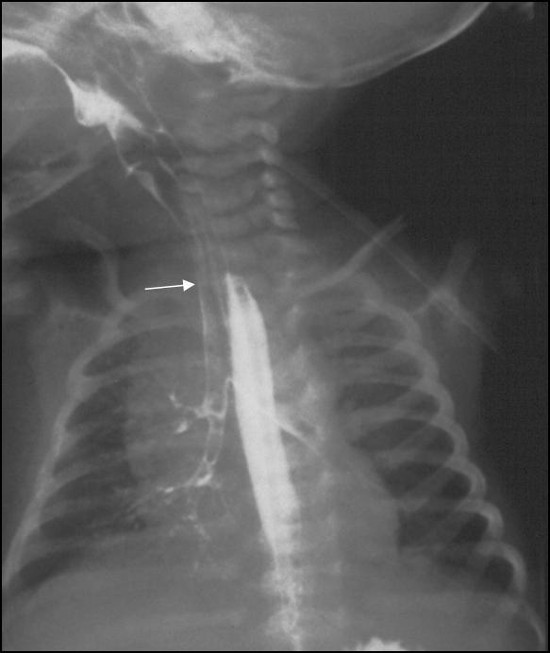- 0044 (0) 207 351 8754
- [email protected]
- Royal Brompton Hospital - London
This is a special x-ray test that assesses how well a child can swallow, and in particular whether their swallow is safe or whether it leads to aspiration of food or drink into the lungs. Aspiration can lead to recurrent chest infections, and although it may be obvious because a child coughs or chokes when drinking, it can sometimes occur silently and not be noticeable until there is an infection problem in the lungs. Generally, liquids are more likely to ‘go down the wrong way’ than solid food. The test is carried out by a speech and language therapist who is an expert in swallowing and feeding problems.
The child does not need to be ‘nil by mouth’ before, but it is helpful if a young child is a little hungry or thirsty. We supply the food but may ask parents to bring in a child’s usual food or favourite drink if they are coming from home. The speech and language therapist will assess the child first, and sometimes decide the x-ray test is not necessary. This is usually when the swallowing is obviously normal to her trained eye, and particularly if the history is not strongly suggestive of aspiration.
It can be done as an out-patient and is carried out in the x-ray department. You should allow 1 hour for the whole test. It does not hurt and there are no needles involved.
Children sit on a small supportive chair in front of the x-ray machine, whilst younger ones sit on their parent’s or carer’s lap. The accompanying person wears a protective lead apron.
The child drinks liquid (milk or juice) which has some almost tasteless barium contrast media in it so that the liquid shows up on the x-ray. If appropriate for their age, they will then be given food of a puree consistency, sometimes followed by solid food, which are also coated in barium.
The swallowing of these different consistencies is shown up on the x-ray machine so that it can be watched in real time. It is also recorded for further analysis.
• Like any x-ray, the child is exposed to a small amount of radiation.
• There is a possibility that the child might aspirate some of the drink or food, but the test is only showing what has been happening already at home.
Initial results are available immediately, but the full report is only available once the further analysis is completed. You can go home straight after the procedure.

A video fluroscopy in a baby, showing the milk (with the dye) entering the lungs (arrow) as well as going down the oesophagus (food pipe). This is diagnostic of aspiration
This is a special x-ray test that assesses how well a child can swallow, and in particular whether their swallow is safe or whether it leads to aspiration of food or drink into the lungs. Aspiration can lead to recurrent chest infections, and although it may be obvious because a child coughs or chokes when drinking, it can sometimes occur silently and not be noticeable until there is an infection problem in the lungs. Generally, liquids are more likely to ‘go down the wrong way’ than solid food. The test is carried out by a speech and language therapist who is an expert in swallowing and feeding problems.
The child does not need to be ‘nil by mouth’ before, but it is helpful if a young child is a little hungry or thirsty. We supply the food but may ask parents to bring in a child’s usual food or favourite drink if they are coming from home. The speech and language therapist will assess the child first, and sometimes decide the x-ray test is not necessary. This is usually when the swallowing is obviously normal to her trained eye, and particularly if the history is not strongly suggestive of aspiration.
It can be done as an out-patient and is carried out in the x-ray department. You should allow 1 hour for the whole test. It does not hurt and there are no needles involved.
Children sit on a small supportive chair in front of the x-ray machine, whilst younger ones sit on their parent’s or carer’s lap. The accompanying person wears a protective lead apron.
The child drinks liquid (milk or juice) which has some almost tasteless barium contrast media in it so that the liquid shows up on the x-ray. If appropriate for their age, they will then be given food of a puree consistency, sometimes followed by solid food, which are also coated in barium.
The swallowing of these different consistencies is shown up on the x-ray machine so that it can be watched in real time. It is also recorded for further analysis.
• Like any x-ray, the child is exposed to a small amount of radiation.
• There is a possibility that the child might aspirate some of the drink or food, but the test is only showing what has been happening already at home.
Initial results are available immediately, but the full report is only available once the further analysis is completed. You can go home straight after the procedure.

A video fluroscopy in a baby, showing the milk (with the dye) entering the lungs (arrow) as well as going down the oesophagus (food pipe). This is diagnostic of aspiration
© Dr. Ian Balfour-Lynn
Powered by LondonWeb
Designed by CrestanaDS